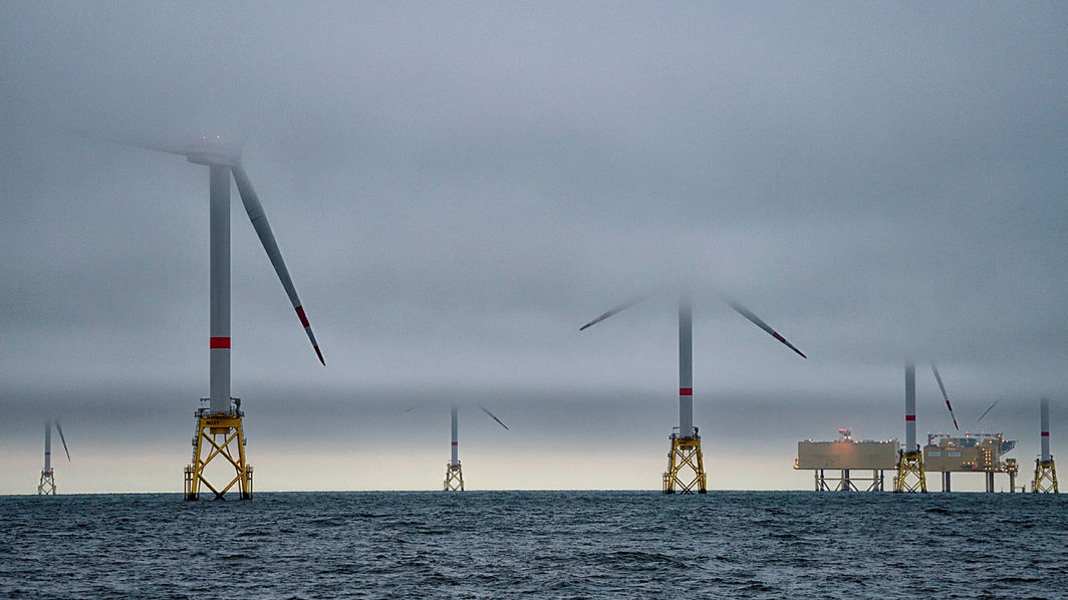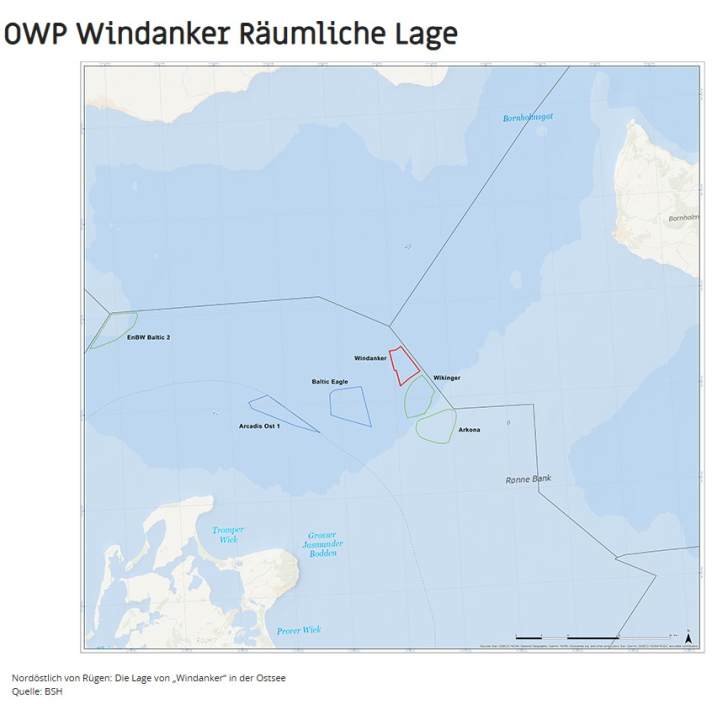Things are getting tighter in the Baltic Sea: Construction of the "Windanker" offshore wind farm off Rügen begins

In January, the Federal Maritime and Hydrographic Agency (BSH) gave the green light for the construction of the "Windanker" offshore wind farm 38 kilometres north-east of Rügen. Construction work is due to start this summer. The BSH has already announced that illuminated cardinal buoys will be laid out to mark the construction area "in good time before the start of the construction phase". As soon as the buoys have been laid out, a separate notice to mariners will be issued. In the meantime, sailors should navigate the area with increased vigilance.
The cardinal barrels are deployed at these positions:
54°55.7554'N | 013°59.3526'E
54°55,7519'N | 014°01,7799'E
54°53,6326'N |014°04,4319'E
54°54,8616'N |013°58,5559'E
54°51,9809'N | 013°59,5767'E
Another 25 square kilometres of sea area occupied
The buoys will mark an area of around 25 square kilometres on the high seas, where the multinational company Iberdrola will erect a total of 21 wind turbines. According to the company's website, they are due to be connected to the grid in the last quarter of 2026. The sea area is expected to be closed for at least the duration of the construction phase.

This means that the popular Rügen - Bornholm route is getting tighter, as the new wind farm is being built directly north-east of the "Arkona Südost" and "Wikinger" wind farms, which are already in operation. Further west, two more offshore wind farms, "Baltic Eagle" and "Arkadis Ost", are currently under construction. In principle, wind farms in the German Baltic Sea are restricted areas: passage is prohibited and sailors must keep a minimum distance of 500 metres.
Loopholes for sailors
However, there are still small loopholes: the Wikinger and Arcona Südost parks, among others, are exempt from the transit ban under certain conditions. During the day, AIS-equipped ships up to 24 metres in length are permitted to pass directly through them. However, anchoring between or mooring at the facilities is prohibited. Visibility must be at least 1000 metres when passing through and the wind must not exceed 6 Beaufort. A distance of 150 metres must always be maintained from the individual wind turbines and 1000 metres from platforms with transformer stations or other technical equipment. If work is being carried out in the park or if there is air traffic, a minimum distance of 1000 metres also applies. Finally, the official nautical chart number 2660 must also be on board. As a general rule, up-to-date information should be obtained before every voyage.
Construction is also underway in Denmark
Further north-east on the route, the construction sites continue, because by 2030 off Bornholm two huge offshore wind farms are also being built. The turbines will be erected around ten nautical miles south-west of Bornholm. However, a 12 nautical mile wide and 20 nautical mile long corridor for shipping is planned between the two wind farm areas.
The dimensions of the planned wind turbines are impressive. With a rotor diameter of 236 metres, they will reach a height of 268 metres above sea level. By comparison, the piers of the Öresund Bridge, which connects Denmark and Sweden, are only 206 metres high. They should be able to supply 3 to 4.5 million households with electricity.
